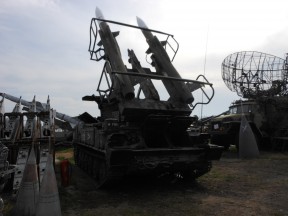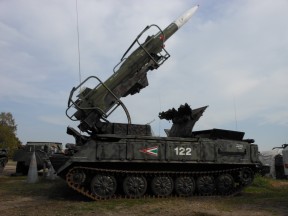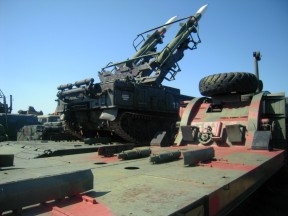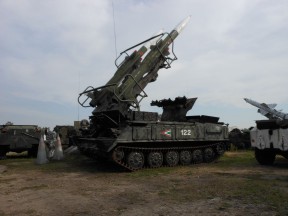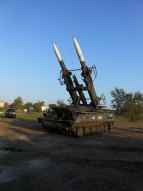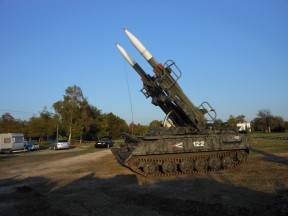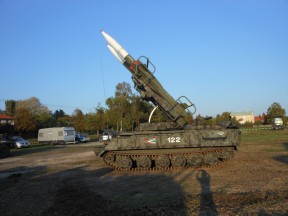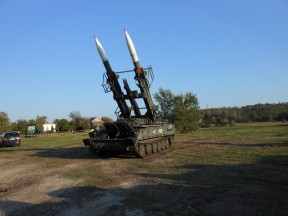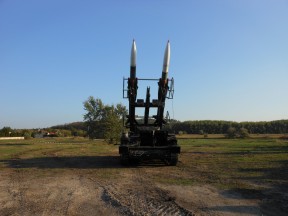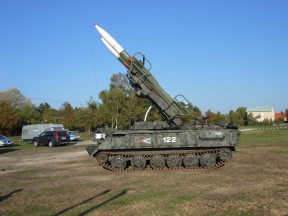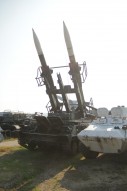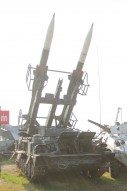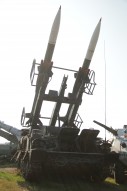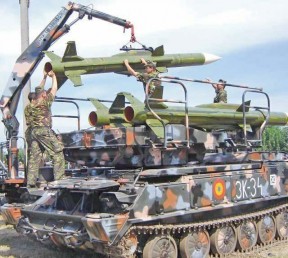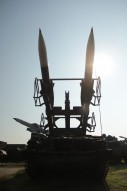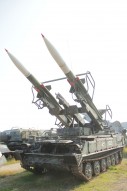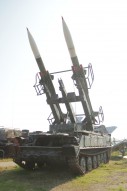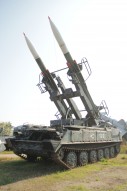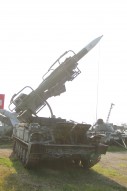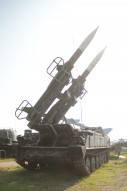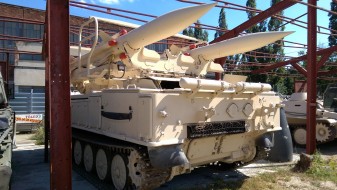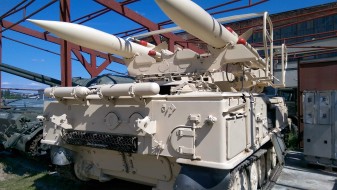Vehicle data sheet
KUB 2K12 transporter
This vehicle is for sale
Manufacturer: Ulyanovsk Mechanical Plant, Soviet Union

| Type: Tracked | Weight: 18.2 t |
| Produced: 1976 | Size: Length 7.389 m, Height 3.45 m |
| Number built: 500 | Engine: Diesel, 282 HP |
| Crew: 3 | Speed: 44 km/h |
Description
Mid-range integral rocket-ramjet Russian surface-to-air missile, widely deployed with Soviet forces and exported to 22 countries. The missile provided one of the great technological surprises in warfare in the October 1973 Arab-Israeli War.
As much as 30% of Israeli fighter formations were shot down by this missile on their first encounter - 30 aircraft in the first day of the war alone. The Israelis and their American backers were not aware of and had no electronic countermeasure for the Kub's continuous-wave illuminating radars. The only effective solution was to fly the aircraft directly at the approaching missile, and then descend under it at the last moment.
The Kub 2K12 surface-to-air missile system (export name Kvadrat) had been accepted by the Soviet land forces for production in 1966. This had been developed by V V Tikhomirov at OKB-11 GKAT (later NIIP Priborostroeniya named for V V Tikhomirov). Development had begun under Tikhomirov in accordance with a decree of July 1958. He directed the work until 1962. From then his deputy Ya N Figorovskiy was responsible, with the project development being led by his first deputy, V K Grishin. The Ulyanovsk Mechanical Works began series production in 1967. By 1971 the missile had been exported to 22 countries.
The system consisted of two associated vehicles: the 1S91 SURN (self-propelled vehicle, developed by A A Rastov at OKB-15 GKAT) with the search and tracking radars) and the 2P25 self-propelled launcher, developed by A I Yaskin, at SKB-203 GKAT, later known as KB Compressor Machinery) which carried three beam-riding missiles. A battery consisted of one 1S91 and four 2P25 - a total of twelve missiles which could be brought to bear on a range of targets.
The 3M9 surface-to-air missile was developed by KB-82 Factory 134 GKAT (later GosMKB Vympel) under the direction of A l Lyapin. The all-moving wing aerodynamic scheme controlled flight by movement of the four deployable wings, with stability provided by four fixed fins aft. The semi-active, self-guiding homing head was developed by I G Akopyan at OKB-15.
Maximum target speed 2160 kph. Reaction time from track to launch 28 seconds. System can be active 5 minutes after arrival at site and deactivated in the same time in 'shoot and scoot' mode. One target can be tracked at a time. Three missiles per launcher.
The 2K12 system shares a lot of components with the 2K11 Krug (SA-4) system. In many ways they are designed to complement each other; 2K11 is effective at long ranges and high altitudes, 2K12 at medium ranges and intermediate altitudes.
The system is able to acquire and begin tracking targets using the 1С91 "Самоходная установка разведки и наведения" ("Self-propelled Installation for Reconnaissance and Guidance" / NATO: "Straight Flush" radar) at 75 km (47 mi) and begin illumination and guidance at 28 km (17 mi). IFF is also performed using this radar. It can only guide one or two missiles to a single target at any time. The missile is initially command guided with terminal semi active radar homing (SARH), with target illumination provided by the "Straight Flush" radar. Detonation is via either the impact or proximity fuze.
On the latest models, this vehicle is also fitted with an optical tracking system which allows engagement without the use of the radar (for active RF emissions stealth reasons, or due to heavy ECM jamming) in which case the effective altitude is limited to 14 km/46000 ft. The optical tracking method also allows engagements to altitudes below that where the radar is able to track targets. Maximum target speed is around Mach 2 for head-on engagements and Mach 1 for tail-chase engagements. Top speed of the missile is approximately Mach 2.8. In contrast to the elaborate Patriot missile or even the simpler Hawk system fielded by US forces, most of the system rides on two tracked self-propelled vehicles, rather than towed or mounted on trucks, and either the launcher or control vehicle can be set to launch in only 15 minutes after changing location


